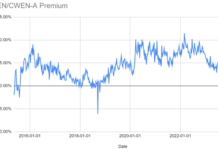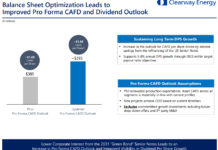by Debra Fiakas CFA
Last week Enviva Partners, LP (EVA: NYSE) reported financial performance for its wood pellets business in its quarter ending September 2015. Sales totaled a whopping $116.6 million, representing a 53% increase compared to $40.5 million in the same quarter last year. The big jump in revenue resulted from higher volumes to larger customers. Distributable cash flow totaled $12.6 million compared to $8.2 million in the year ago period. Quarter performance made possible a declared cash distribution of $0.44 per common unit, which is 7% higher than the minimum quarterly distribution.
At its current price EVA provides a yield of 12.6%, a figure that should get the attention of just about every investor. Double digit dividend yields are rare, so the skeptical investor has to wonder whether it is sustainable.
Enviva management is quick to describe rapid developments in the energy industry that favor the use of wood pellets as fuel. Wood pellets offer better consistency, density, and energy efficiency compared to burning raw wood directly. Although approximately twice the cost of unprocessed wood, the energy content of wood pellets is also double that of green wood. It appears the conversion of coal-to-biomass is a prominent driver of demand for wood pellets especially in Europe. Using wood for energy is generally regarded as having a much smaller carbon footprint than coal and other fossil fuels.
During the earnings conference call management provided a laundry list of new power and existing power plants gearing up to use wood pellet feedstock. According to the U.S. International Trade Commission production capacity in the United States has increased from less than 3 million metric tons in 2008 to over 12 million metric tons in 2014. Wood pellets have become a significant segment of the forest products industry in the south. The production capacity expansion has been prompted by increasing demand. Estimates of global wood pellet consumption vary, but are currently on the order of 22 to 25 million metric tons per year and are projected to rise to between 50 and 80 million metric tons by 2020.
Wood pellets are made from compacted sawdust and other wastes that result from the production of lumber and furniture. The company operates five wood pellet production facilities with a combined capacity of 1.7 million metric tons per year. Production capacity is about to expand by another 510,000 tons through the acquisition of a wood pellet production plant in Virginia. The plant is currently owned by Enviva’s sponsor, which has an off-take agreement in place to receive 500,000 tons of wood materials. The deal is expected to close in December 2015. A second plant in Sampson County, North Carolina with similar capacity is on the calendar for acquisition from the sponsor later in 2016.
Favorable demand trends and capacity expansion bode well for continued strong cash flows…and distribution to common unit holders. Financial strength to seize the opportunity is another matter. Enviva held $75.2 million in total cash at the end of September 2015, and debt totaled $176.8 million after paying down long-term debt by $183.2 million since the beginning of 2015. Enviva is not a large company, but certainly in a good position to access capital through more debt.
EVA is currently trading at 33.0 times trailing earnings, which may seem a bit pricey. However, in terms of future earnings EVA might be a bargain. The stock is priced at 12.6 times the consensus estimate for 2016.
Debra Fiakas is the Managing Director of Crystal Equity Research, an alternative research resource on small capitalization companies in selected industries.
Neither the author of the Small Cap Strategist web log, Crystal Equity Research nor its affiliates have a beneficial interest in the companies mentioned herein.








